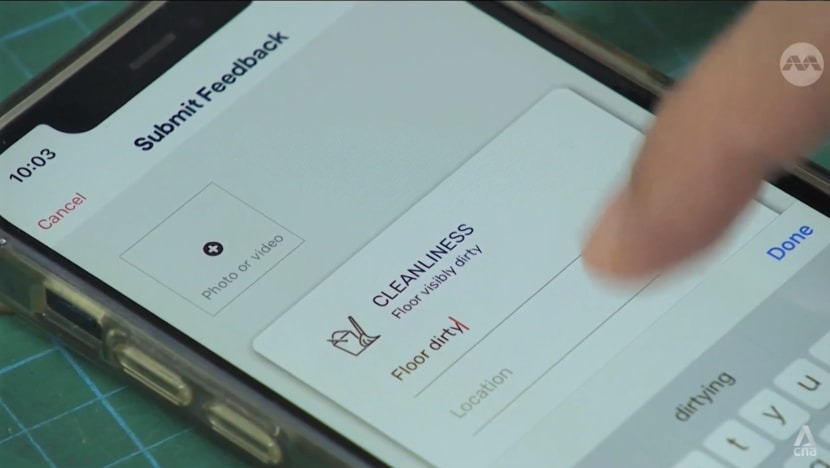More buildings putting in AI, smart sensors to manage utilities, cut costs

More buildings in Singapore are using smart systems with sensors and artificial intelligence (AI) to manage their utilities and manpower amid rising costs.
These smart facilities management systems are also being used to help buildings go green.
At least one facilities management application developer has seen the take-up jump a third from last year.
SAVING MANPOWER
Visitors to The Floravale, for instance, only need to drive to the gantry and scan a unique QR code to enter the condominium in Westwood Avenue.
They do not need to sign in at the guardhouse as registration is done online in advance.
Mr Teo Poh Siang, managing agent at The Floravale, said: “We have actually cut down one security officer, and one security officer costs almost S$5,000 per month. “So over a year,Read More : Homework will 'never be the same,' says ChatGPT founder it's about S$50,000 to S$60,000.” The condominium went digital about two years ago, as the paperwork started to mount. The same smart facility management system allows residents to make payments and flag maintenance issues more easily.
There are also plans to use it to monitor water quality with sensors in the swimming pool.
The system, developed by property technology firm Qornerstone, has helped to keep the condominium management team lean with only five workers for the entire 754-unit property.
“The built environment has always been a manpower-intensive industry,” said Qornerstone chief executive officer Ernest Ong.
“So due to cost pressure, that is where the industry has no choice but to look into transformation by technology means.”
MANAGING RESOURCES
Fu Yu Corporation, a manufacturer of plastic products, also uses a similar platform to manage its resources, from taking room temperatures to controlling light switches remotely.
These are done using a system developed by software solutions provider Cerexio, which monitors in real-time using sensors.
Besides better energy use, the technology has also saved the company about a third of its total man hours. It can also optimise operations such as data and finance.
The company has plans to expand this to other areas in its bid to go green.
“We've got six plants in Asia, and one of our key focuses is sustainability,” said Fu Yu Corporation group chief executive officer David Seow.
“So we have pledged to reduce our energy usage by 30 per cent. And what goes into this 30 per cent most is reducing raw material wastage, reducing water usage as well as electricity. So by using this system, it definitely allows us to turbocharge our process into this initiative.”
Smart facilities management systems are also part of the built sector's plans to go digital, and government grants are available for them to make the switch.
On Singapore’s aim to achieve net zero emissions by 2050, Cerexio chief executive officer S Gowrishankar said: “Because of the 2050 initiative, they have to be carbon neutral, and a lot of organisations are actually working towards that and to achieve that goal.
These smart facilities management systems are also being used to help buildings go green.
At least one facilities management application developer has seen the take-up jump a third from last year.
SAVING MANPOWER
Visitors to The Floravale, for instance, only need to drive to the gantry and scan a unique QR code to enter the condominium in Westwood Avenue.
They do not need to sign in at the guardhouse as registration is done online in advance.
Mr Teo Poh Siang, managing agent at The Floravale, said: “We have actually cut down one security officer, and one security officer costs almost S$5,000 per month. “So over a year,
There are also plans to use it to monitor water quality with sensors in the swimming pool.
The system, developed by property technology firm Qornerstone, has helped to keep the condominium management team lean with only five workers for the entire 754-unit property.
“The built environment has always been a manpower-intensive industry,” said Qornerstone chief executive officer Ernest Ong.
“So due to cost pressure, that is where the industry has no choice but to look into transformation by technology means.”
MANAGING RESOURCES
Fu Yu Corporation, a manufacturer of plastic products, also uses a similar platform to manage its resources, from taking room temperatures to controlling light switches remotely.
These are done using a system developed by software solutions provider Cerexio, which monitors in real-time using sensors.
Besides better energy use, the technology has also saved the company about a third of its total man hours. It can also optimise operations such as data and finance.
The company has plans to expand this to other areas in its bid to go green.
“We've got six plants in Asia, and one of our key focuses is sustainability,” said Fu Yu Corporation group chief executive officer David Seow.
“So we have pledged to reduce our energy usage by 30 per cent. And what goes into this 30 per cent most is reducing raw material wastage, reducing water usage as well as electricity. So by using this system, it definitely allows us to turbocharge our process into this initiative.”
Smart facilities management systems are also part of the built sector's plans to go digital, and government grants are available for them to make the switch.
On Singapore’s aim to achieve net zero emissions by 2050, Cerexio chief executive officer S Gowrishankar said: “Because of the 2050 initiative, they have to be carbon neutral, and a lot of organisations are actually working towards that and to achieve that goal.
Source: www.channelnewsasia.com
